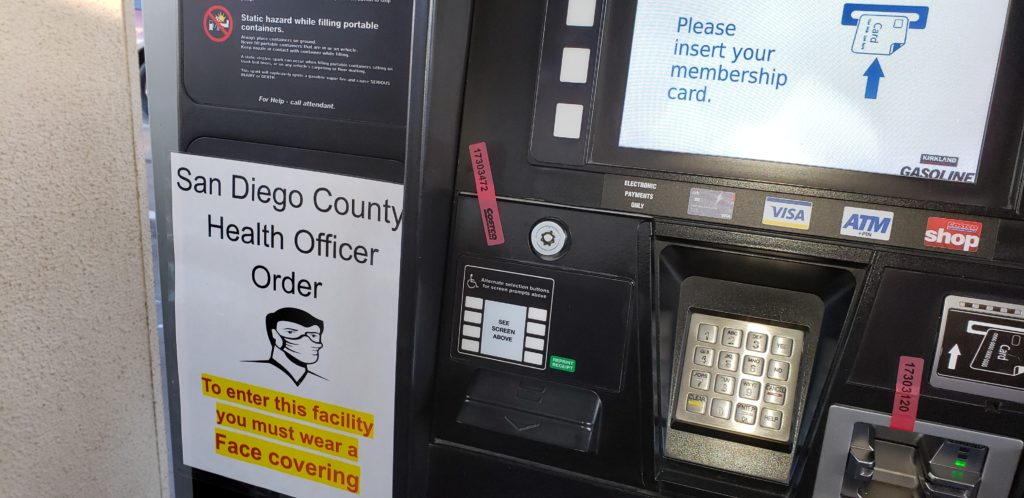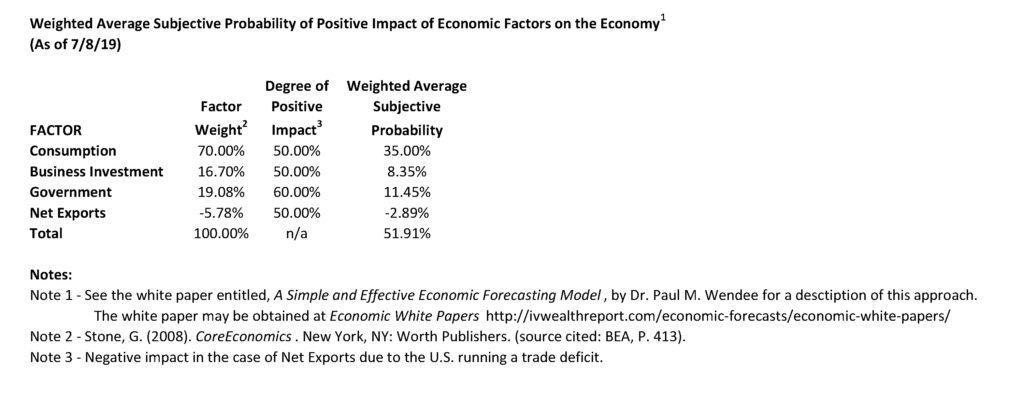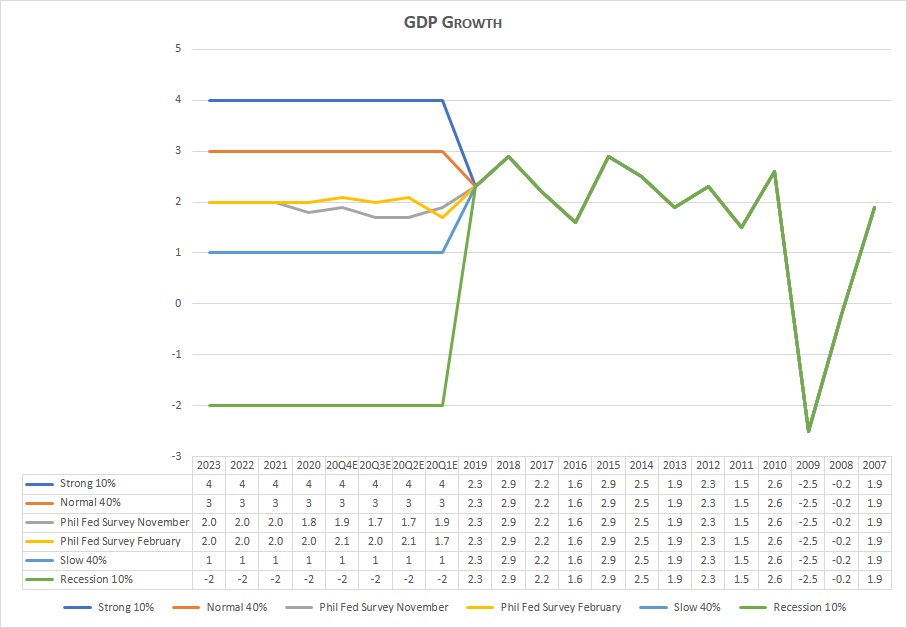Can Business Solve the Covid-19 Containment Problem?
People around the world have taken sides on the Covid-19 issue. Most health experts and most governments contend that Covid-19 is a real problem. Those that believe it is a real problem agree for the most part that preventative measures must be taken to contain the spread of the virus. But to be fair, not everyone agrees that Covid-19 is a real problem; and not everyone is in agreement about the best way to stop the spread.
What to do about Covid-19 has become an enormous political battle across the globe. For those in the camp that believe that Covid-19 is a significant health threat, the consensus is that masks and social distancing are the answer, along with a variety of other measures. For many people though, the Covid-19 issue is more complex. There are many who believe that governments are encroaching on the freedoms and rights of citizens. Along these lines, some even believe in conspiracy theories. Many believe that standing up to the virus is a demonstration of one’s masculinity. And there are a host of other beliefs and opinions about the Covid-19 situation.
Regardless of where one stands on the Covid-19 issue, what is obvious by the increasing number of new cases of the virus and the demonstrated lack of compliance and respect for the safeguards that have been mandated, what governments have been doing is not working in many places around the world. This is particularly true for many places in the United States. The U.S. alone just passed 3 million cases and is nearing the 4 million mark. Here in California, compliance is a major problem. California Governor Newsome has reinstituted closures and other measures in an attempt to get California’s case count under control. But I’m not sure that is the answer, as people haven’t been complying enough with the measures that had been and are currently in place. So what is the answer?
As I was contemplating all of this, I began to wonder if business might be the answer. According to Mankiw (2018): “The invisible hand [Adam Smith] takes all the information about buyers and sellers into account and guides everyone in the market to the best outcome as judged by the standard of economic efficiency. It is truly a remarkable feat. That is why economists so often advocate free markets as the best way to organize economic activity” (p. 146). Containing the virus certainly can be considered an economic activity, particularly as the pandemic has had the greatest negative effect on the economy in probably one hundred years. Furthermore, in a debate at FreedomFest (Mackey & O’Leary, 2019) last year with Kevin O’Leary, John Mackey, CEO and co-founder of Whole Foods, noted that businesses should take on more of a societal problem-solving role because businesses are good at solving problems.
To help explore this avenue of inquiry, I am sending out a survey. If you would like to participate in the survey, go to this link: https://www.surveymonkey.com/r/ZLKSBK6. You can also contact me at pwendee@pmwassoc.com (please put “Survey on Business Solutions to Coronavirus” in the subject line). We will report the results of the survey in a future lead article in this newsletter.
References
Mackey, J. and K. O’Leary (2019). Libertarian Duel in the Vegas Sun. FreedomFest, Las Vegas.
Mankiw, N. G. (2018). Principles of Microeconomics. Boston, Cengage.
Economic and Investment Highlights
Last Week
The biggest U.S. banks are expecting a big hit to earnings from their lending operations and are preparing for a wave of loan defaults.
Violent crime is spiking in several large cities across the U.S.
The U.S. budget deficit was $3 trillion in the twelve months ended in June. This puts the budget deficit on track to be the largest since World War II.
The Fed’s Kaplan said recent economic data point to a slowing recovery as Covid-19 cases surge.
California imposed new restrictions as the number of Covid-19 cases surges in the State.
Ford and GM are struggling with worker absences as the coronavirus surges.
Inflation picked up in June, rising 0.6%. Prices had been declining, causing fears of deflation as the economy deteriorates.
Chinese imports from the U.S. rose in June, the first time since the coronavirus began.
China’s economy grew 3.2% in the second quarter from a year earlier, the first major country to resume growth since the pandemic began.
The average mortgage rate on 30-year fixed rate mortgages fell to a 50-year low (the lowest on record) of 2.98%.
Retail sales rose 7.5% in June amid concerns that a rise in covid-19 cases will curb job growth and retail sales going forward.
The U.S. labor market is showing signs of losing momentum amid a rise in Covid-19 cases.
The Dow and the S&P 500 rose for the week, while the Nasdaq declined. The Dow was up 2.3%; the S&P 500 was up 1.25%; and the Nasdaq was down 1.1%. The 10-year treasury yield ended the week at 0.628%. Gold closed at $1,808.30 for the week. Oil closed at $40.59 for the week.
The Week Ahead
This link takes you to Econoday’s Economic Calendar and Economic Events and Analysis which shows the upcoming economic reporting events scheduled in the week and months ahead.
Summary
Note: The models below may not capture the impact of COVID-19 beyond their impact on GDP source data and relevant economic reports that have already been released. They may not anticipate the impact of COVID-19 on forthcoming economic reports beyond the standard internal dynamics of the models.
Note: The comments that follow are derived from the economic indicators referenced in the Resources section of this newsletter and other sources in this report.
The Aruoba-Diebold-Scotti Business Conditions Index (ALS) had been trending up for several weeks from having dipped in 2019. Recently with the advent of the economic collapse, the index crashed. It has now been generally trending up again, but fluctuating within a narrow band. This is a positive indicator for the economy on a short-term basis.
The GDPNow model estimate for real GDP growth (seasonally adjusted annual rate) in the second quarter of 2020 is -34.5 percent. This reading differs from the ALS model assessment of an improving short-term economic environment.
The New York Fed Staff Nowcast stands at -14.3% for 2020:Q2 and 13.2 for 2020:Q3.
The Chicago Fed National Activity Index (CFNAI) showed a decrease in economic activity in April. The Chicago Fed National Activity Index (CFNAI) was 2.61 in May, up from -17.89 in April.
All told, these short-term economic indicators are a mixed analysis for the economy, at least on a short-term basis.
Expectations that stock prices will rise over the next six months is now at 30.8% in a recent AAII Sentiment Survey. The historical average is 38.0% for the survey. 23.8% of the investors in the survey described their short-term outlook as neutral and 45.4% were bearish. Please see the AAII Sentiment Survey for the complete results.
The latest Gross Output (GO) reading (July 6, 2020) showed that Gross Output slowed significantly in the first quarter of 2020.
On a longer-term basis, the forecasters in the Philadelphia Fed’s Survey of Professional Forecasters (as of May 15, 2020) predict real GDP will contract at an annual rate of -32.2 percent for the second quarter of 2020; and increase at 10.6 percent for the third quarter of 2020, 6.5 percent in the fourth quarter of 2020, 6.8 percent in the first quarter of 2021, and 4.1 percent in the second quarter of 2021. On an annual-average over annual-average basis, the forecasters predict real GDP to contract -5.6 percent in 2020; and grow 3.1 percent in 2021, 4.1 percent in 2022 and 2.2 percent in 2023. The forecasters predict the unemployment rate will be above 10.0 percent over the next three quarters (16.1 percent in Q2, 12.9 percent in Q3, and 11.0 percent in Q4); will be 10.8 percent in 2020; 8.1 percent in 2021, 6.2 percent in 2022, and 5.1 percent in 2023. The next survey release date is August 14, 2020.
The National Association for Business Economics (NABE) released an Outlook Flash Survey on April 10, 2020. The NABE panel expects GDP declines in Q1 2020 and Q2 2020, and upticks in Q3 2020 and Q4 2020. The panel believes the U.S. economy is already in a recession and predicts real GDP will grow at an annual rate of -2.4 percent for the first quarter of 2020, -26.5 percent for the second quarter of 2020, 2.0 percent in the third quarter of 2020, 5.8 percent in the fourth quarter of 2020, and 6.0 percent in the first quarter of 2021. The forecasters expect unemployment to average 3.8% in Q1 2020. The median unemployment rate projection for Q2 2020 is 12.0%. The unemployment rate is expected to fall back to 9.5% at the end of 2020, and to 6.0% at year-end 2021. The panel’s forecast for the PCE price index less food and energy calls for a slowdown in the annual rate of change from 1.7% in Q1 to 0.8% in Q2 2020. The panel expects the rate to increase gradually to 1.7% in the last half of 2021.
For a more in-depth review and analysis of the economy, please see our mini-book on economic analysis and forecasting entitled: Simple and Effective Economic Forecasting.
Stock Market Valuations
Our estimates of the market valuations for two stock market indices, the Dow Jones Industrial Average (DJIA) and the Standard & Poor’s 500 (S&P 500), can be found in the file below:
Conclusion
During this time of global flux due to the coronavirus, I am leaving the Conclusion discussion below the same as was posted on March 23, 2020. The March 23, 2020 discussion still adequately reflects my thinking on the current state of affairs.
Important Note: While I don’t believe it is time to jump back into the stock market in a big way because of the market’s overvaluation, I have been advising the last few of weeks in this Commentary and in my weekly podcast, Intrinsic Value Wealth Report Radio, that investors can continue building their investment portfolios by selecting individual securities that offer growth and value opportunities.
Reprinted from March 23, 2020
Up until the past week, the economy had been in a stable but somewhat vulnerable state. Nonetheless, it had remained fairly strong. In fact, robust consumer spending and strong labor market conditions had given us confidence that the economy, which had been in its tenth year of expansion, could continue to grow. But we were cautious on this outlook. There were several reasons for our caution. U.S. business growth had been mixed. And global economic growth had been mixed as well. The new coronavirus was becoming a global economic threat, although it was still too early to tell how much of an effect it would ultimately have. Debt is at high levels for consumers, businesses, and government (at all levels of government). Finally, this is an election year that will likely have significant consequences either positively or negatively depending on the outcome of the elections. And of course, it is still too early to tell what the outcome of the elections will be.
In just a few days, the coronavirus’s effect on the economy and the markets went from a ripple to a tsunami. Businesses are shuttering, events are being cancelled or postponed, grocery store shelves are empty, and people are being asked or ordered to stay home. The markets are now deep in bear market territory. The effects on the economy, even given the short time that the economy has been retreating, may be with us for a long time. There is now a much greater risk of a recession, and there has even been some talk of a depression. The government, the Fed, Republicans, and Democrats, and pretty much the entire country, is trying to get the virus under control and is coming up with plans to mitigate the long-term economic effects caused by the virus. But the virus has impacted the economy – in a significant way – in just a short time. How long lasting the effects will be no one can tell right now. The economy has been largely shut down and remains so today. It takes time to restart the economy after a situation such as what is occurring at the present time.
Given these events and the rapidly deteriorating situation, as I said last week, I would caution not to panic. The economy and the markets will get better. The situation is bad – there is no doubt about that – but it will turn around. The real question is when will it turn around? No one knows that at the present time. But it will turn around.
For now, review your investment portfolios. It is highly likely that all or most of your stocks are down. You should not consider selling the bulk of your stocks – only consider selling companies that are not sound companies. But do recognize that as the economy deteriorates, even good companies will be affected.
For stock market value hunters, we believe it is still too early to jump back in. We will be closely monitoring the markets using the many tools and models that we have developed over the years to assess the economy and the markets. We will use our best judgement and thoughts to let you know when we believe things are turning around. The turnaround hasn’t happened yet.
We believe it is important to maintain a long-term view toward investing. But for now, just sit tight. Eventually, this means that you should continue building your investment portfolio using the Cassandra Stock Selection Model to select individual securities that offer growth and value opportunities.
Chart for Review and Thought

Simple and Effective Economic Forecasting Model
Note: The table and chart below have not been updated. However, we believe that a recession is quite likely. In the chart below, the bottom green line shows what a recession could look like.


Notes (GDP Growth Chart):
- See the July 8, 2019 Commentary for an introduction to this model.
- Actual numbers 2007 through 2019; forecasted numbers thereafter.
- Normal GDP growth is typically in the 2% to 3% range.
- A recession is generally defined as two consecutive quarters of negative economic growth as measured by a country’s gross domestic product (GDP).
Thought for the Week
“Face coverings work. It’s our major defense to prevent ourselves from getting this infection. If all of us would put on a face covering now for the next four to six weeks, I think we could drive this epidemic to the ground in this country” ~ Robert Redfield, Director of the CDC
Announcements
The Intrinsic Value Wealth Report has started a new YouTube channel called Intrinsic Value Wealth Report TV. You can view the YouTube channel at Intrinsic Value Wealth Report TV.
The Intrinsic Value Wealth Report has started a new podcast called Intrinsic Value Wealth Report Radio. You can listen to the podcast at Intrinsic Value Wealth Report Radio.
Dr. Wendee spoke at the Investment Club of America’s annual economic summit, called Econosummit, on Sunday March 1, 2020 in Las Vegas.
Dr. Wendee attended the The National Due Diligence Alliance (TNDDA) investment banking conference, which was held March 6-8, 2020 at the Four Seasons Resort in Dallas, Texas. This is a conference held several times throughout the year for investment bankers and registered investment advisers to learn about new opportunities in the Alternative Investment asset classes.

We have been researching the use of crowdsourcing for investment ideas. We will be sending a survey out in the next few weeks to get your input on the economy and the markets; and to get any investment ideas that you would like to share. We will compile this input and distribute the results to you and our other subscribers. We have been testing our crowdsourcing models with students and have been having good success and results.
Dr. Wendee has been researching and writing a new theory of economics known as, The Value Creation Theory of the Economy (also known as, Intrinsinomics). The full paper on Intrinsinomics will be published in the near future.
Finance 3350: Personal Finance-Portfolio & Risk Management– Dr. Wendee started teaching Finance 3350 – Portfolio & Risk Management at California State University, Los Angeles (CSULA) for the Summer term starting May 2020. Dr. Wendee teaches courses in Management and Finance at CSULA.
Business 548: Strategy and Decision Making – Dr. Wendee will be teaching Business 548 – Strategy and Decision Making at California Baptist University (CBU) starting at the end of June 2020. Dr. Wendee teaches courses in Finance, Business, Strategy & Decision Making, and Economics at CBU.
Dr. Wendee presented a paper on his new theory of economics known as, The Value Creation Theory of the Economy (also known as, Intrinsinomics), at the International Leadership Association’s annual global conference which was held in Ottawa, Canada last Fall.
Dr. Wendee will present an updated paper on his new theory of economics known as, The Value Creation Theory of the Economy (also known as, Intrinsinomics), at the International Leadership Association’s annual global conference which will be held in San Francisco, California in November.
Dr. Wendee is working on a financial planning modeling program which will be available in the near future. The modeling program is designed to assist anyone in creating a financial plan and is customizable for each person’s unique financial planning goals. A working draft of the model is currently in beta test with students. Click this link, schematic, to go to the clickable document under the subheading Financial Planning Process (Draft) in the Intrinsic Value Wealth Report to see a draft of the schematic for the new financial planning process.
Dr. Wendee has been developing an econometric model specifically designed to monitor and forecast the global economy as this current economic crisis unfolds. This new econometric model is based on other econometric models that he has designed and have used for many years. You can find some of these earlier models in Book # 6 – Simple and Effective Economic Forecasting in the sister website to this website which is called the Intrinsic Value Wealth Report. The new econometric model has been constructed with some additional tools and methods that he has learned and some that he has developed over the last several years. He will be talking more about this new econometric model in this Commentary over the next few months. His comments and forecasts on the economy and the markets going forward will be based to a significant extent on this new model.
We have begun raising capital for our fund-of-funds investment, Northwest Quadrant Opportunity Fund, LLC. The fund engineers and constructs an investment vehicle consisting of Alternative Asset investments. The fund’s objective is to build a diversified portfolio of strong, solid, steady- performing assets, with highly qualified asset managers who have proven track records that meet our underwriting requirements. To learn more about the Northwest Quadrant Opportunity Fund, LLC and to obtain an offering memorandum, please click Northwest Quadrant Opportunity Fund, LLC.
Intrinsic Value Wealth Creation pyramid
We always conclude our commentary with a discussion of the Intrinsic Value Wealth Creation Pyramid. The Intrinsic Value Wealth Creation Pyramid is designed to show some of the major categories for building wealth. It is the result of many years of study of the wealth building process; experience working with clients who have built considerable wealth; and my own personal experience building wealth. Newsletter subscribers should consult the Intrinsic Value Wealth Creation Pyramid as one of many useful investment tools while considering their investment plans.
The chart in this section is an expanded version of the Intrinsic Value Wealth Creation Pyramid Chart referenced in the Forbes.com article entitled, Nine Of The Best Ways To Build Wealth.
RESOURCES
See our Resources section for links to economic and other resources used in the preparation of this Commentary.
